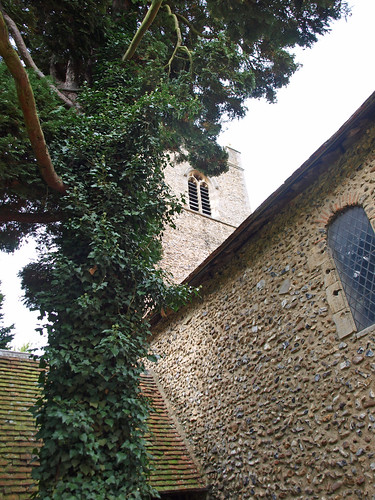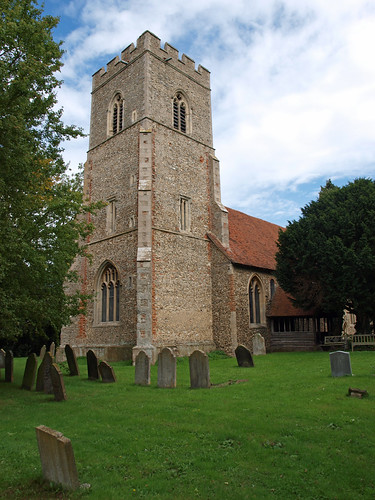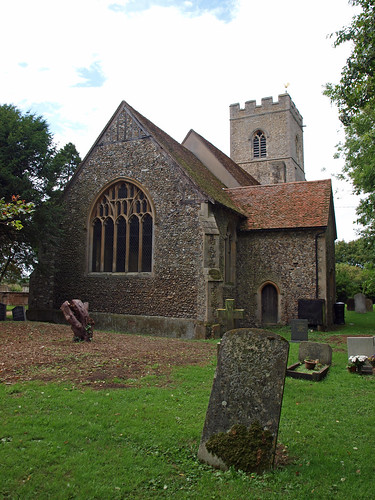St Martin was locked with no sign of a keyholder, a sadly normal event in these parts. The exterior and setting are pleasant; I liked it. Interestingly Mee refers to a C16th lead spire which is no longer extant - either it went towards the war effort or, more likely, somebody nicked it...perhaps that's why its locked, although locking a church does not protect its spire.
ST MARTIN. Norman nave with Roman brick quoins, two plain doorways, some original windows and a plain one-stepped chancel arch. Chancel E.E. with a simple recess in the N wall W tower c. 1500 with diagonal buttresses, battlements, and recessed lead spire. - S DOOR with some C13 iron work. - FONT. Norman, square, of Purbeck marble with zigzag decoration and incised concentric circles in the spandrels on the top.
ST MARTIN. Norman nave with Roman brick quoins, two plain doorways, some original windows and a plain one-stepped chancel arch. Chancel E.E. with a simple recess in the N wall W tower c. 1500 with diagonal buttresses, battlements, and recessed lead spire. - S DOOR with some C13 iron work. - FONT. Norman, square, of Purbeck marble with zigzag decoration and incised concentric circles in the spandrels on the top.
WHITE RODING. It has something from every century since the Conqueror; all of them have given some little thing of interest or beauty to the simple church by the mill. It has something, indeed, much older than the Conqueror, for a walk under a bower of trees with their roots beneath the rectory moat brings us to walls with Roman bricks in them; they are at the corners of the nave. This is how we may put the time-table of the centuries in this interesting little church.
11th. Then were built the arches and the tiny windows.
12th. Now the font was carved, a hoary square bowl with rough zigzags, and perhaps a Norman mason carved the five consecration crosses on the altar stone.
13th. The ironwork of the south door was wrought with the drop-handle which twenty generations have used.
14th. During this century were carved two weird figures looking down on the sanctuary, one resting his chin on his arms, one gripping his hair as if distraught.
15th. The carpenters of this century fashioned the roof, and the glass workers gave a window a roundel of coloured glass.
16th. The villagers realised that they had a splendid chance for a tower, and up it went, three stages of it with battlements from which a lead spire rises.
17th. The old men gathered for a chat in their handsome new porch, listening to the live bells at the time of the Great Fire of London, the bells that ring today.
18th. The curious chest and the altar table came.
19th. Now was added a new vestry, and the church was restored.
20th. To this time we must be grateful for the lovely roses blooming in the churchyard.
A constant friend to its church this village has been, and an old friend to the village has been the medieval house known as Colville Hall. It is half a mile away, one of those red brick homes which began to spring up over the countryside when the devastating Wars of the Roses ended at Bosworth Field. It has a low gable and pinnacles and has been enriched by mullioned windows in which are ten roundels of glass painted with the occupations of the months.



No comments:
Post a Comment